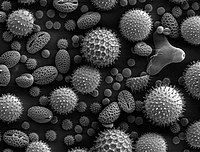
Photo from wikipedia
Over the years, computer scientists are working on building models that aid the scientific community in many ways by cutting laboratory expenses or by saving time. Such models find useful… Click to show full abstract
Over the years, computer scientists are working on building models that aid the scientific community in many ways by cutting laboratory expenses or by saving time. Such models find useful applications in microscopy images as well. Determining the morphology of nanoparticles from Transmission Electron Microscopy images is a manual and cumbersome task. In the past years, scientists have tried to build models to automate the process of nanoparticle segmentation in microscopy images. This study focuses on finding the best segmentation model, which achieves high metrics and is robust to microscopy parameters. For this purpose, eight different models have been compared. The training dataset consists of 150 BF-TEM Platinum nanoparticle images containing 3629 nanoparticles of all kinds. Further, we examine the generalizability of the models on E-TEM Gold nanoparticle images. We also describe essential considerations while choosing a network for segmenting nanoparticle images that generalize well across the Platinum BF-TEM and Gold E-TEM nanoparticles dataset. The layer gradients are visualized to further explain the black-box nature of neural networks.
Journal Title: Ultramicroscopy
Year Published: 2021
Link to full text (if available)
Share on Social Media: Sign Up to like & get
recommendations!